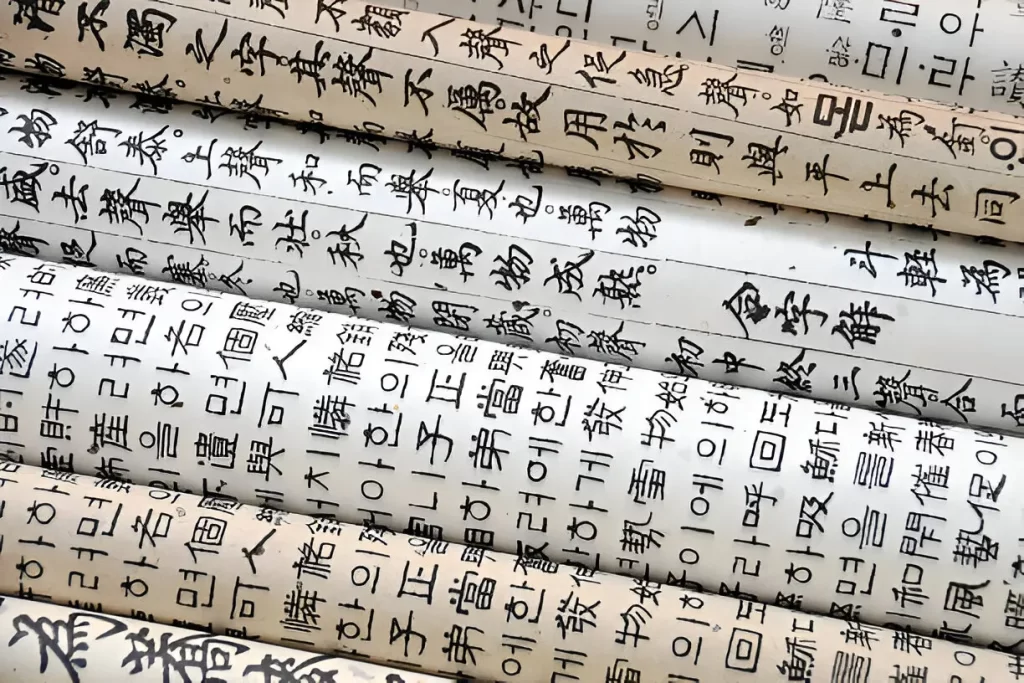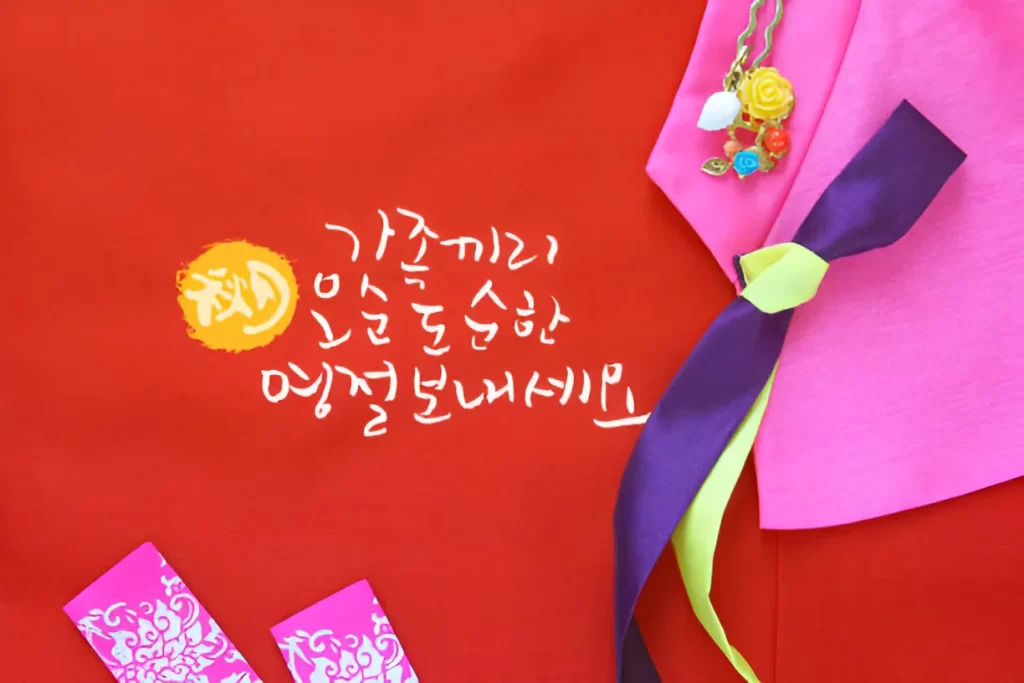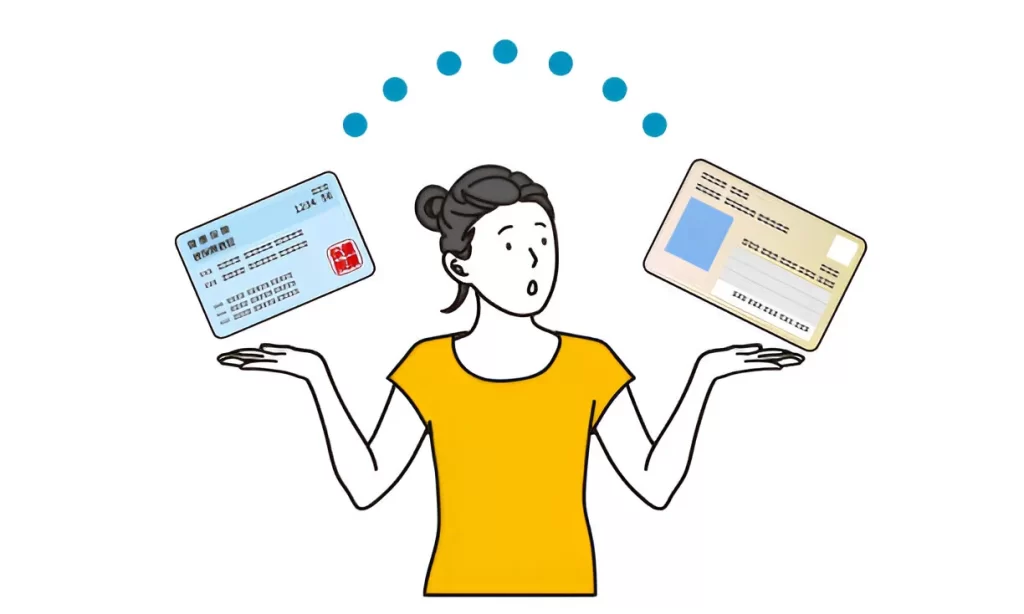Table of Contents
Have you ever seen a Korean identification card and wondered why it includes Chinese characters? You’re not alone.
While South Korea has its unique alphabet called Hangul, many government-issued IDs still include Hanja, the Korean name for Chinese characters.
In this comprehensive article, we’ll dive into the historical, cultural, and legal reasons behind this unique practice.
Whether you’re a language enthusiast, a traveler, or someone exploring Korean culture, this blog post will give you valuable insights into why Hanja still holds a place in modern South Korean identity.
What Are Hanja and Hangul?

To understand why Chinese characters are present on Korean ID cards, it’s important to differentiate between Hangul and Hanja:
- Hangul: The Korean phonetic alphabet was invented in 1443 during the Joseon Dynasty. It’s considered one of the most logical and scientific writing systems in the world.
- Hanja: These are Chinese characters that were adopted into the Korean language centuries ago. Although Korea has its language, Hanja has historically been used for scholarly, governmental, and legal documents.
While Hangul is the primary script used in everyday communication, Hanja is still taught in schools and used in specific contexts.
Historical Background: Why Was Hanja Adopted in Korea?
The relationship between Korea and China dates back thousands of years, marked by trade, cultural exchange, and political alliances. Here’s how Hanja found its way into Korean officialdom:
- Before Hangul, Korea didn’t have its writing system. Educated Koreans used Classical Chinese for written communication.
- Elite Language: Hanja was primarily used by the upper class (yangban) for scholarly and bureaucratic purposes.
- Hangul’s Resistance: When Hangul was first introduced by King Sejong, many elites resisted its adoption, considering it less prestigious.
- Government Use: Over time, even with the promotion of Hangul, Hanja remained in use in official documents, seals, and certifications.
Thus, Hanja became embedded in legal and institutional traditions, including personal identification.
Why Do Korean ID Cards Have Chinese Characters?

Name Disambiguation
One of the main reasons for using Hanja on ID cards is name clarity. Korean names are often composed of two syllables and can be spelled identically in Hangul. However, the meaning can vary greatly depending on the Hanja used.
Example:
- “김민수” (Kim Min-su) could correspond to multiple Hanja combinations like:
- 金珉洙
- 金敏洙
- 金旻洙
Adding Hanja removes ambiguity, making it easier for legal identification and record-keeping.
Legal and Administrative Standardization
In the Korean legal system, names are registered with both Hangul and Hanja. This dual registration:
- Ensures consistency in legal documents
- Reduces the risk of misidentification
- It is often required for inheritance, property, and family registry records
Cultural Heritage Preservation
Despite the dominance of Hangul, Hanja is still seen as a part of Korea’s intellectual and historical heritage. Including it on ID cards:
- Maintains connection to Korean roots
- Reinforces literary traditions
- Encourages young people to learn and appreciate classical forms of writing
Cross-Border Identification
Many Korean names share characters with Chinese names. Hanja allows for easier recognition in international contexts, particularly with Chinese-speaking countries.
- Simplifies immigration checks in regions like Taiwan or Hong Kong
- Aligns with multilingual government databases in global systems
Modern Trends: Is Hanja Still Common Today?

The use of Hanja has been declining in everyday life, especially among the younger generation. However:
- Government documents still include Hanja for names
- High school education covers around 1800 common Hanja
- Newspapers and academic journals sometimes use Hanja to avoid ambiguity
In contrast, some modern ID cards have begun minimizing the use of Hanja, particularly in digital versions. The South Korean government has debated whether it’s time to fully transition away from Hanja.
Still, many parents choose children’s names based on meaningful Hanja combinations, reflecting cultural continuity.
Read also: Lyposingrass
Public Opinion on Hanja in ID Cards
Korean society is divided on the issue:
- Supporters say it promotes clarity and tradition.
- Critics argue that it complicates the process, especially for younger people unfamiliar with Hanja.
- Some see it as a colonial remnant, while others see it as a prestigious legacy.
A 2023 survey by the Korea Institute for Cultural Studies found:
- 61% support keeping Hanja in ID names
- 32% favor using Hangul only
- 7% were undecided
How Foreigners Should Understand Korean IDs?

If you’re a foreign resident or visitor, here are tips:
- Don’t be confused by the Chinese characters — they’re part of Korean tradition
- Ask for a Hangul explanation when dealing with official forms
- Foreign names are registered in Hangul only (Hanja doesn’t apply)
Understanding this practice can enrich your appreciation for Korea’s multilingual identity and help you navigate documentation smoothly.
Final Words
So, why do Korean ID cards have Chinese characters? It’s a blend of history, legal necessity, and cultural pride.
While Hangul proudly stands as Korea’s alphabet, Hanja continues to serve a meaningful purpose in the realms of law, clarity, and tradition.
Whether or not it will remain in the future is up for debate. But for now, Chinese characters on Korean ID cards tell a story — one that spans centuries, languages, and identities.
Want to explore more about the Korean language and culture? Bookmark this blog and follow for future insights!
People also ask
Why does South Korea still use Chinese characters on ID cards?
South Korea includes Chinese characters (Hanja) on ID cards to avoid name duplication, maintain legal accuracy, and preserve cultural heritage.
Are Korean citizens required to know Hanja to read their ID cards?
No. While Hanja is taught in schools, most Koreans recognize their own names’ characters without needing full Hanja literacy.
Can a Korean ID card be issued without Chinese characters?
Some digital IDs and newer formats may minimize or omit Hanja, but official paper documents often still include them for legal consistency.
What’s the difference between Hangul and Hanja?
Hangul is the Korean phonetic alphabet, while Hanja are Chinese-origin characters used mainly for names and specialized contexts.
Do foreigners in Korea have Chinese characters on their ID cards?
No. Foreigners’ names are typically registered only in Hangul, as Hanja does not apply to non-Korean names.






